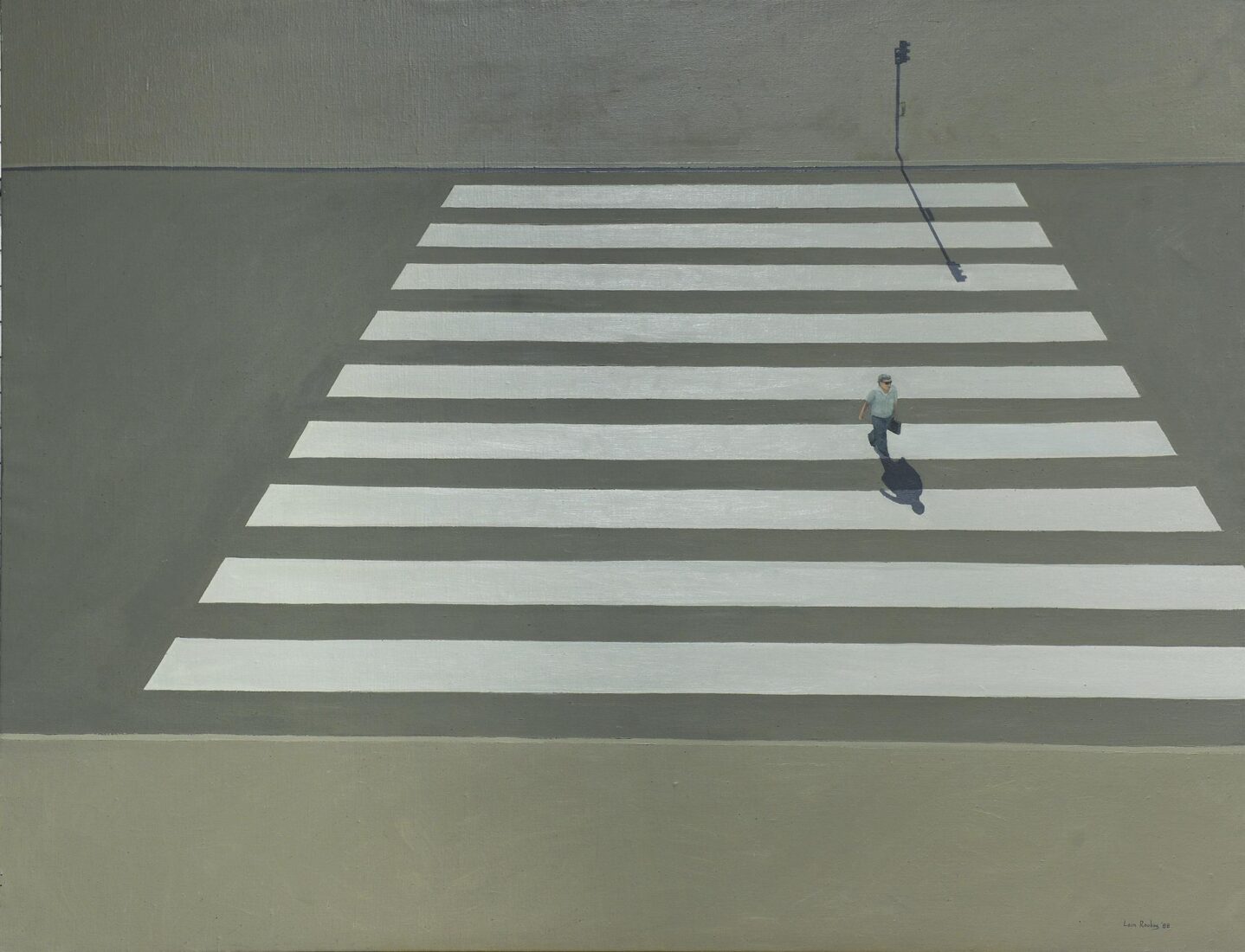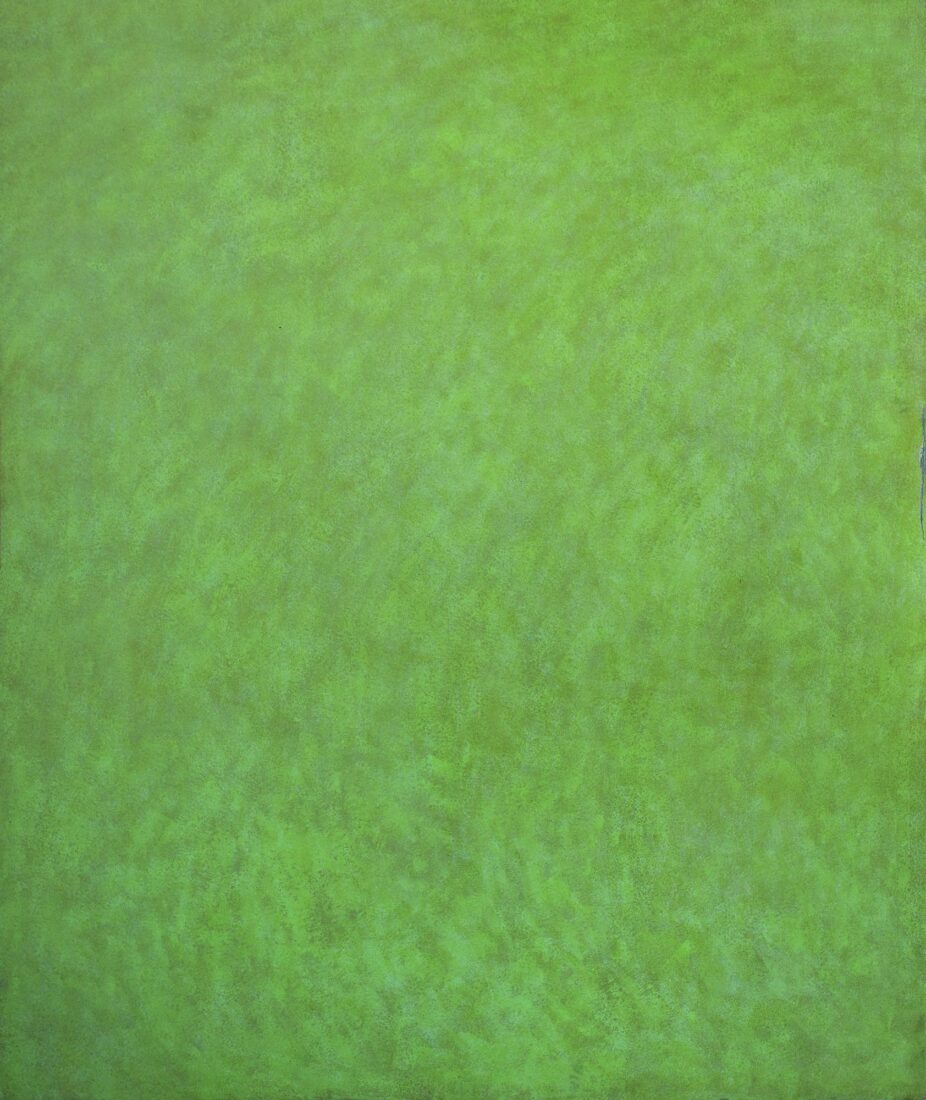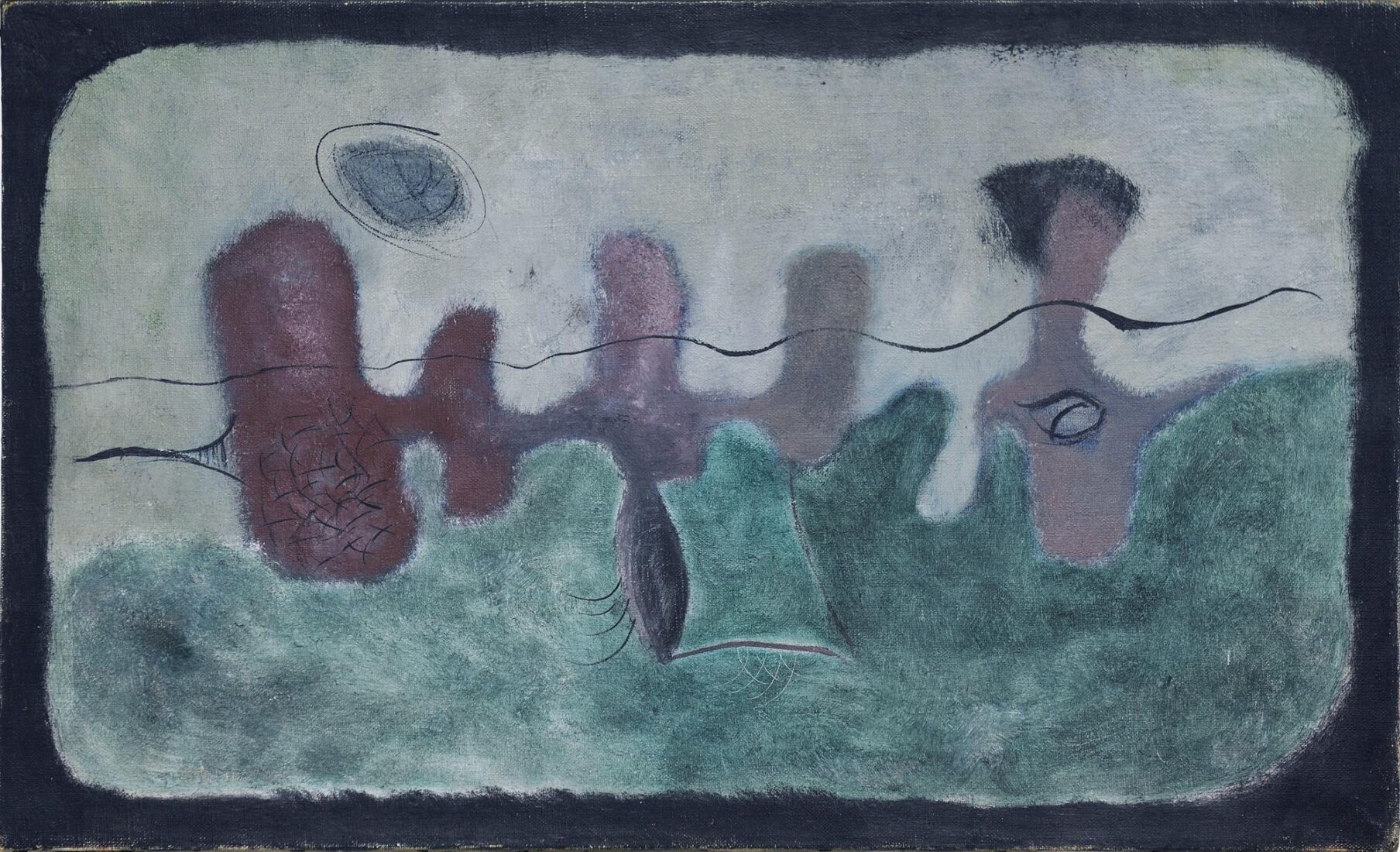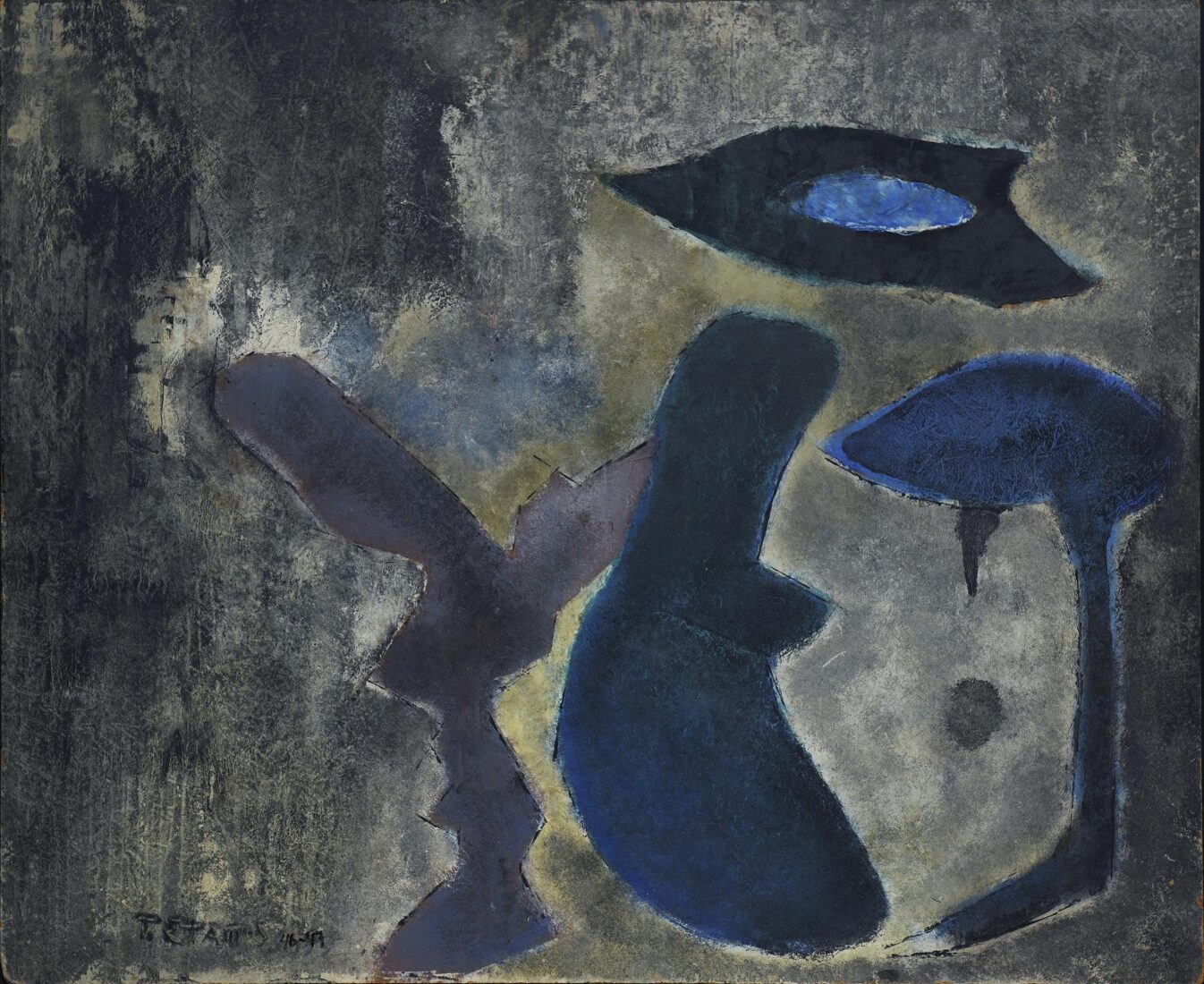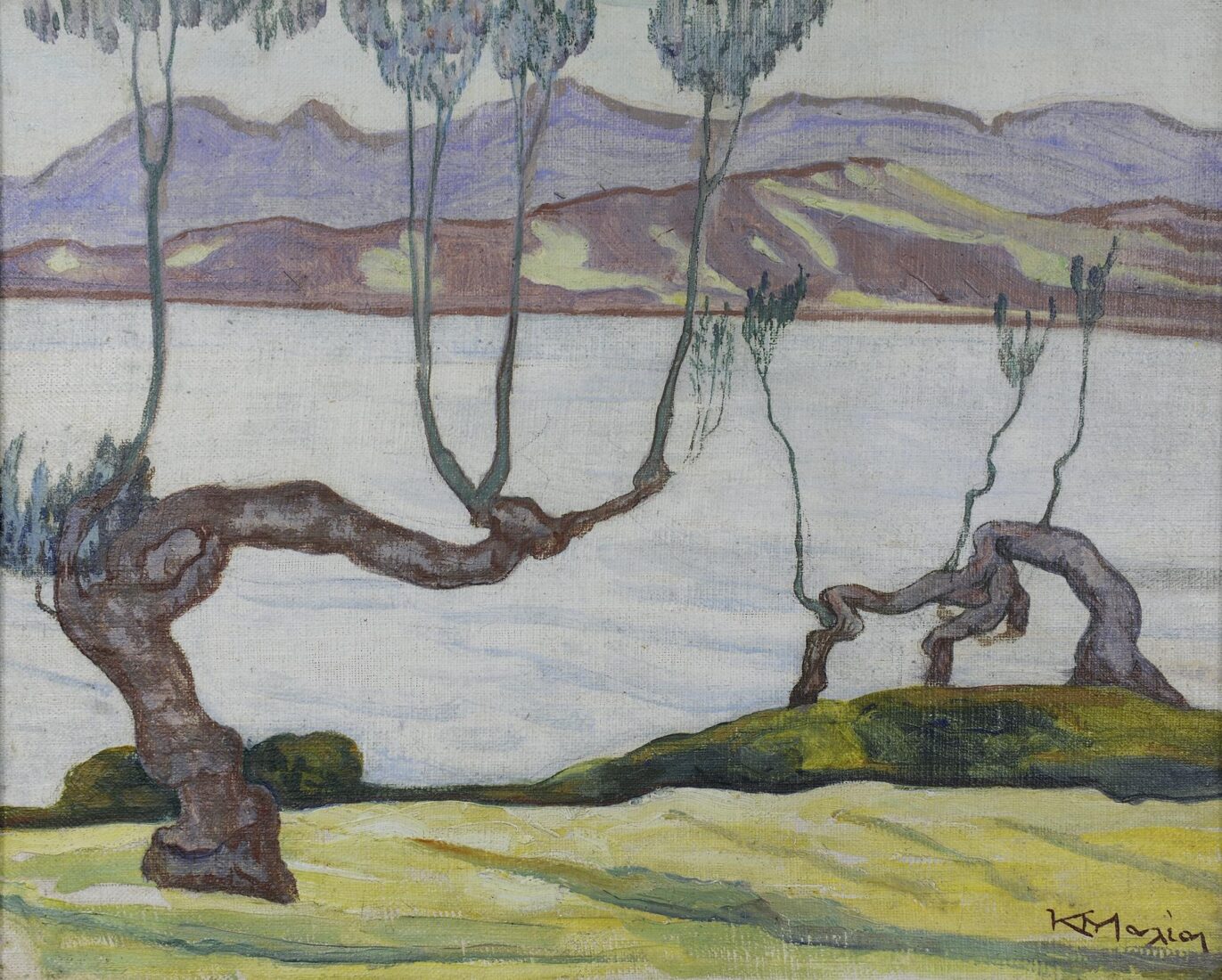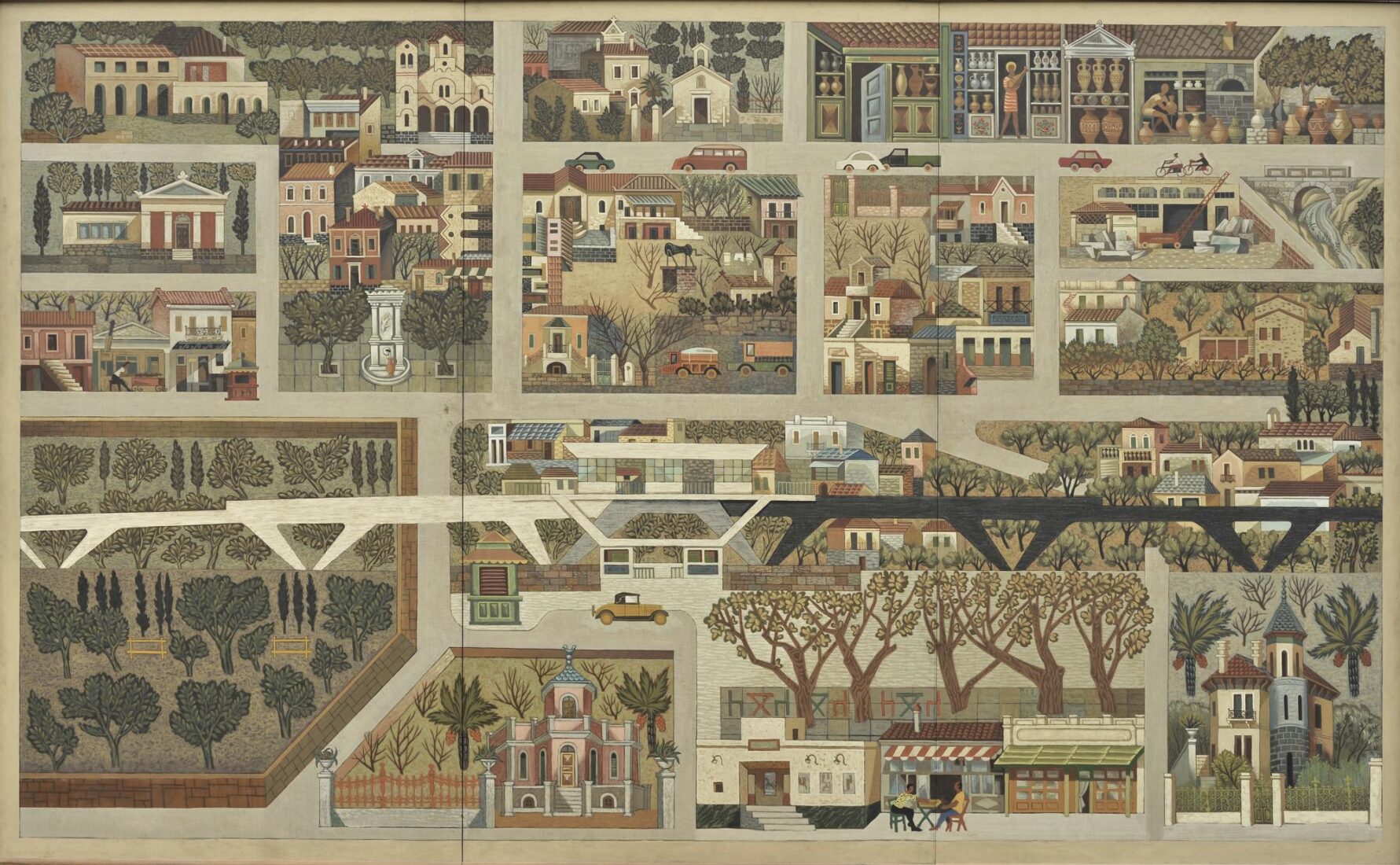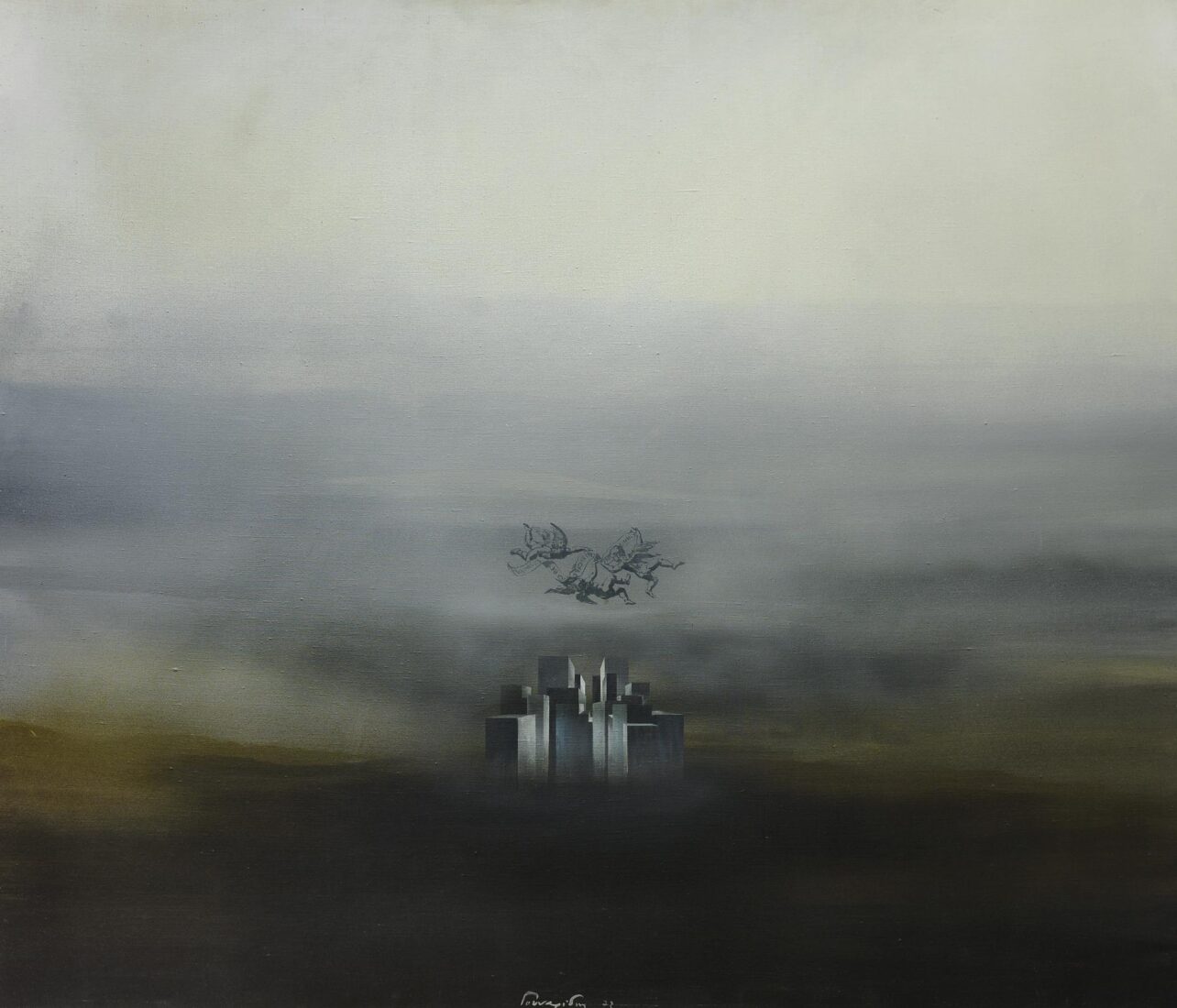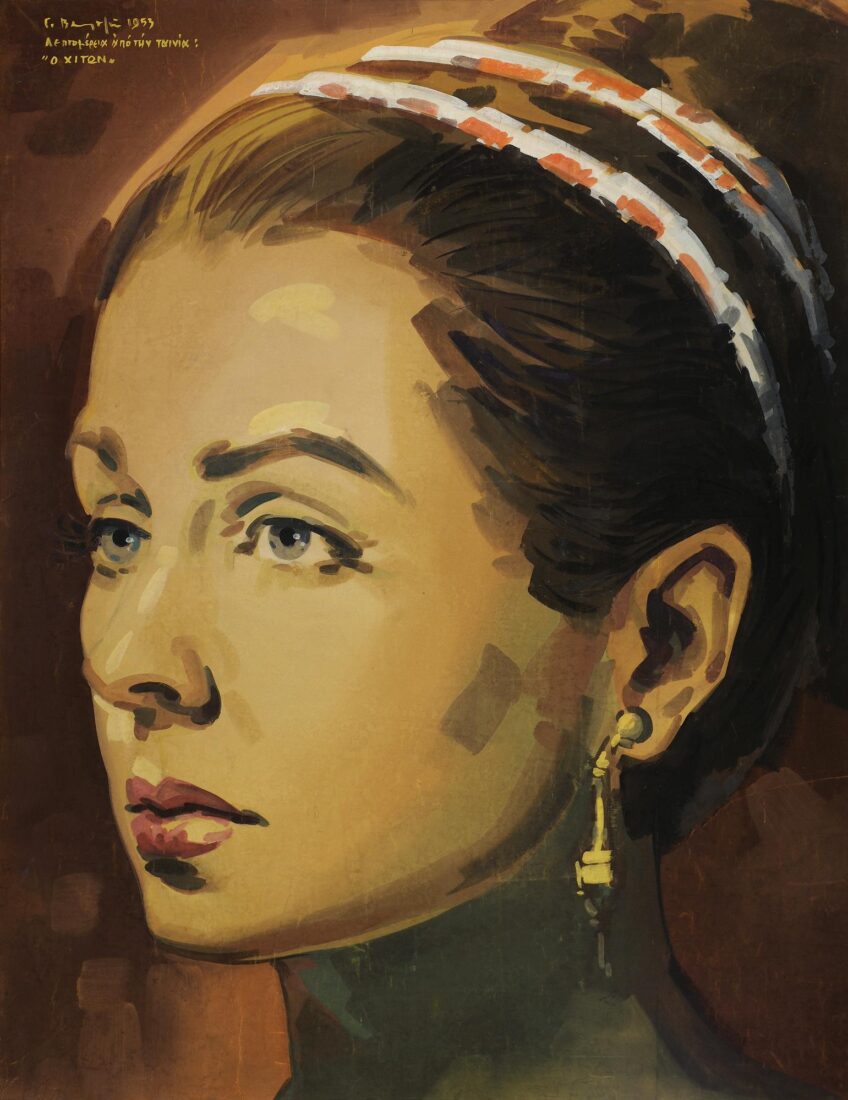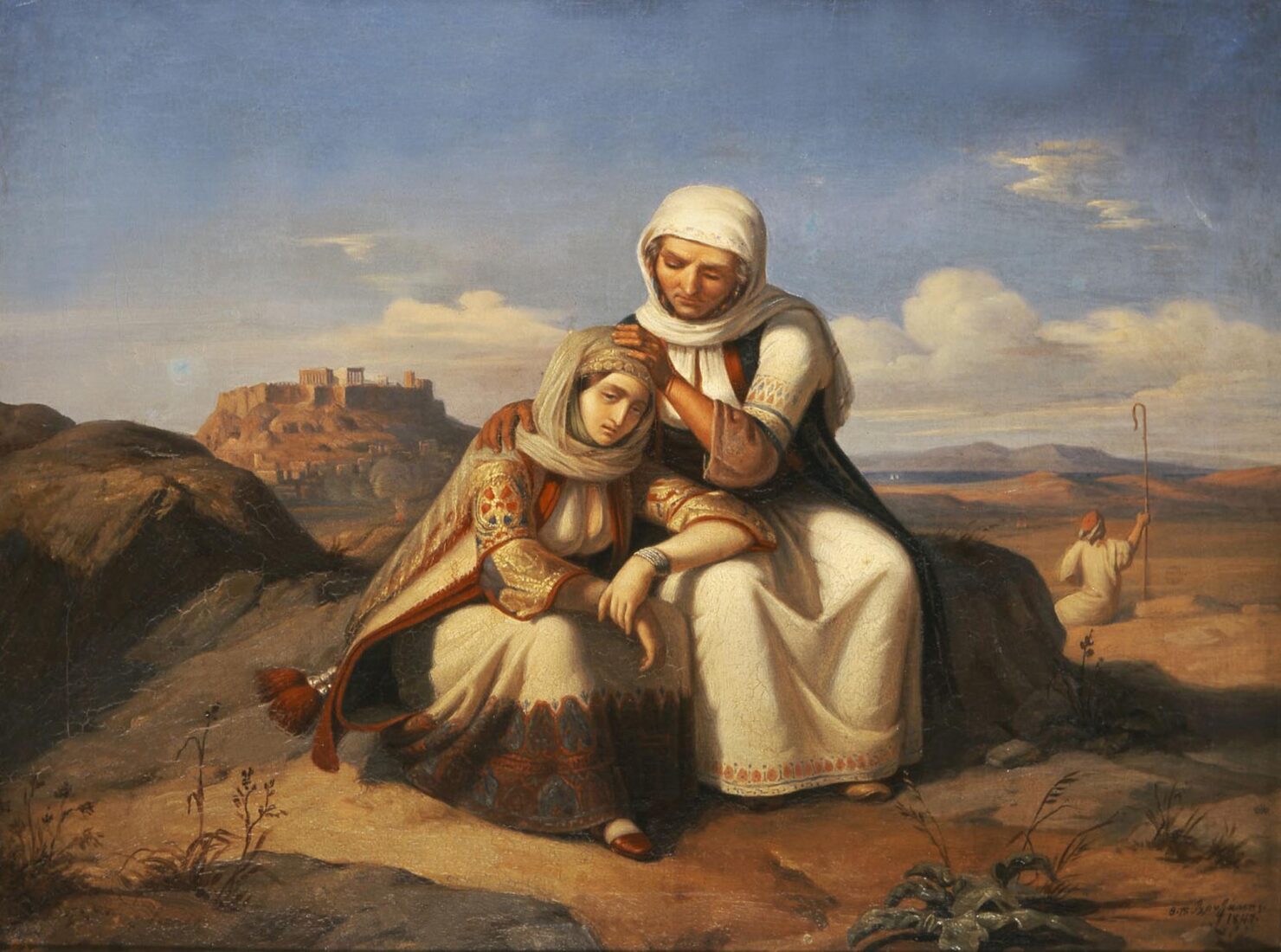

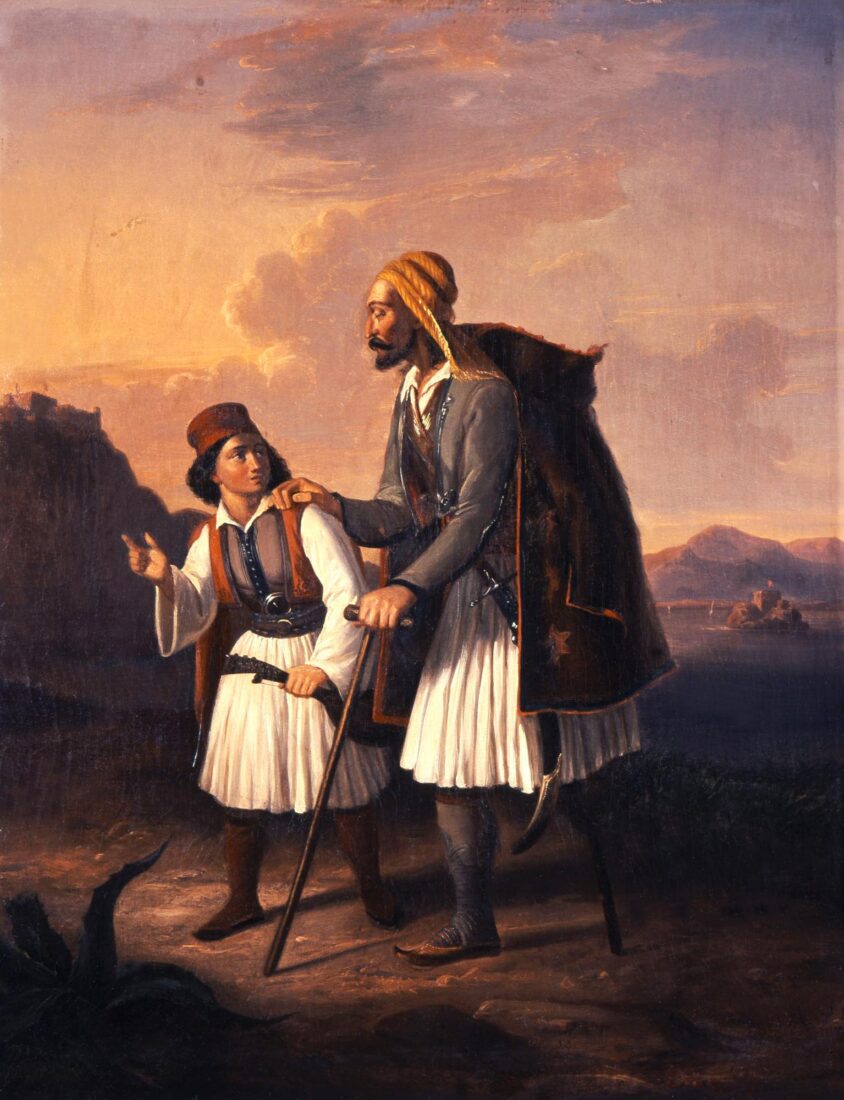
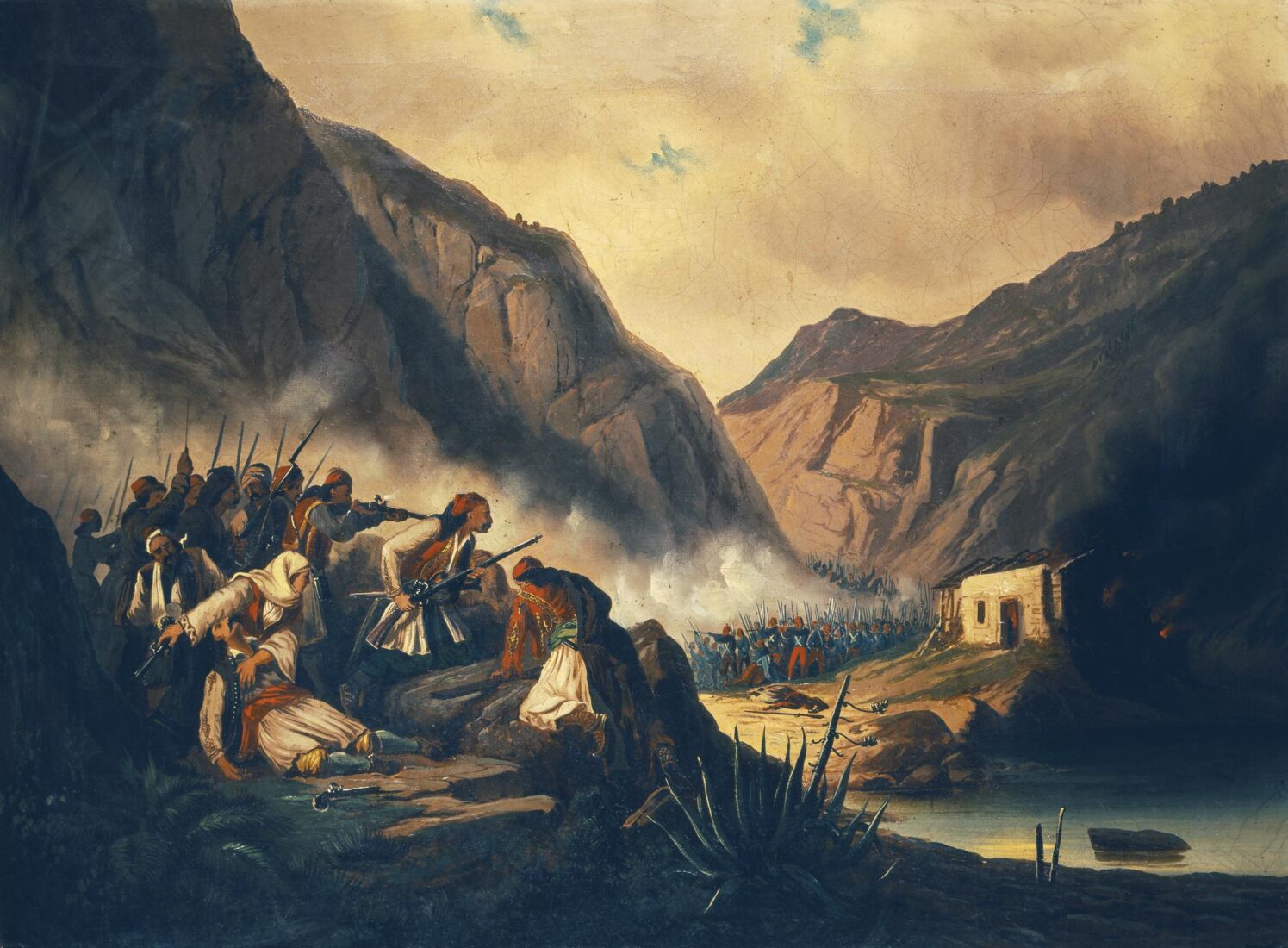
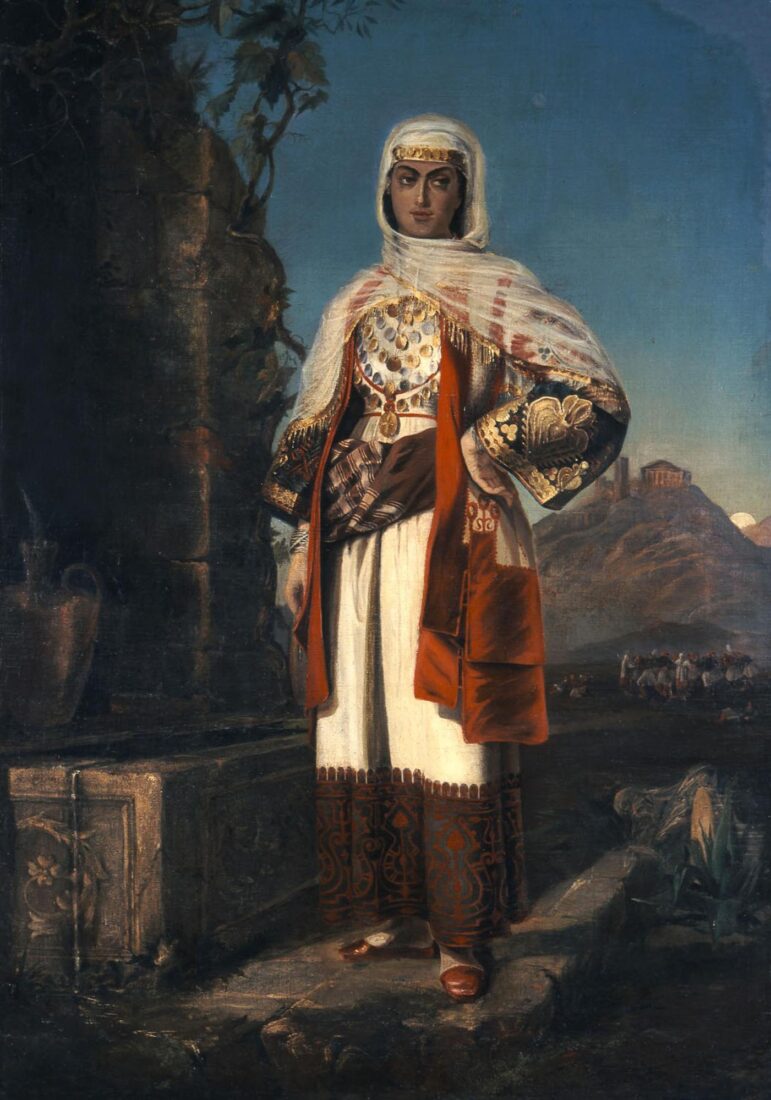
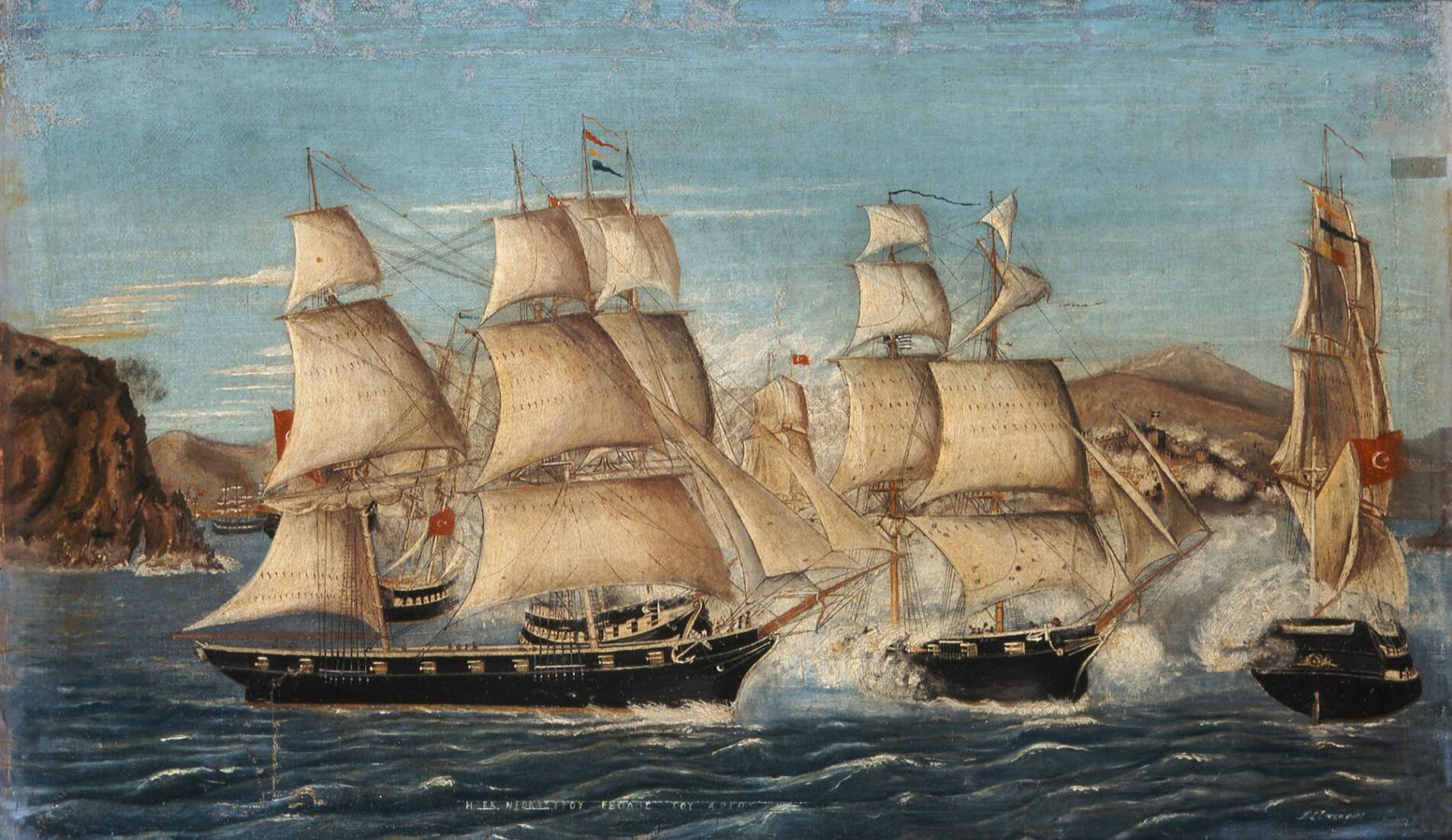
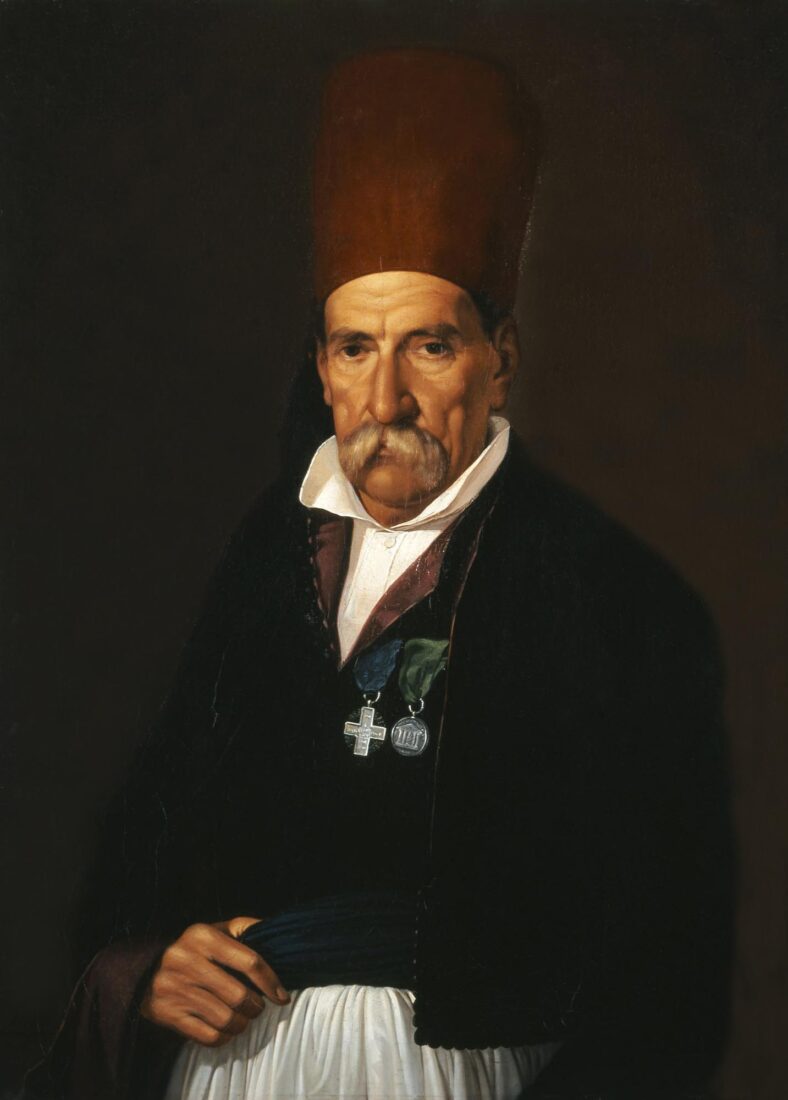
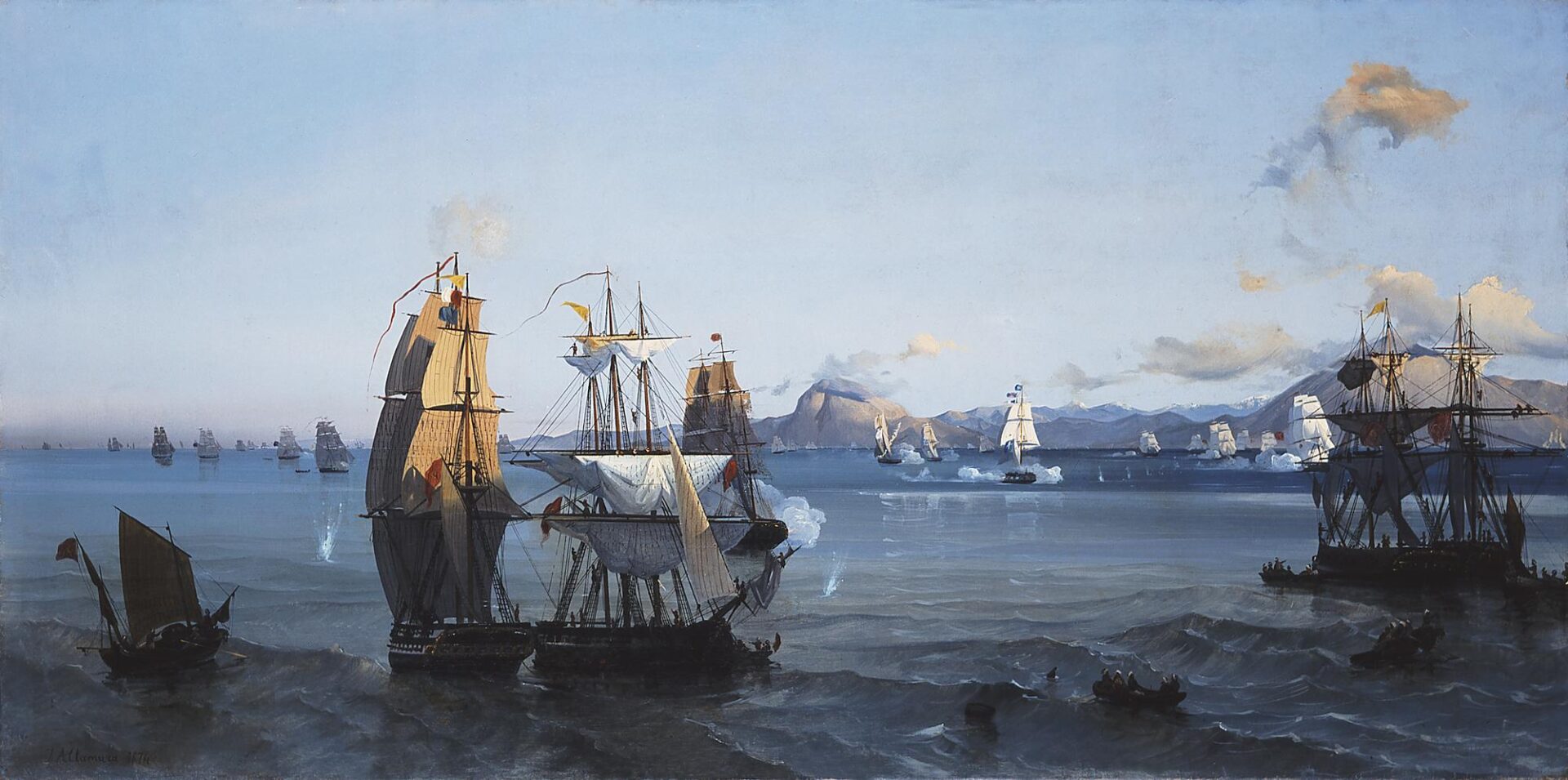
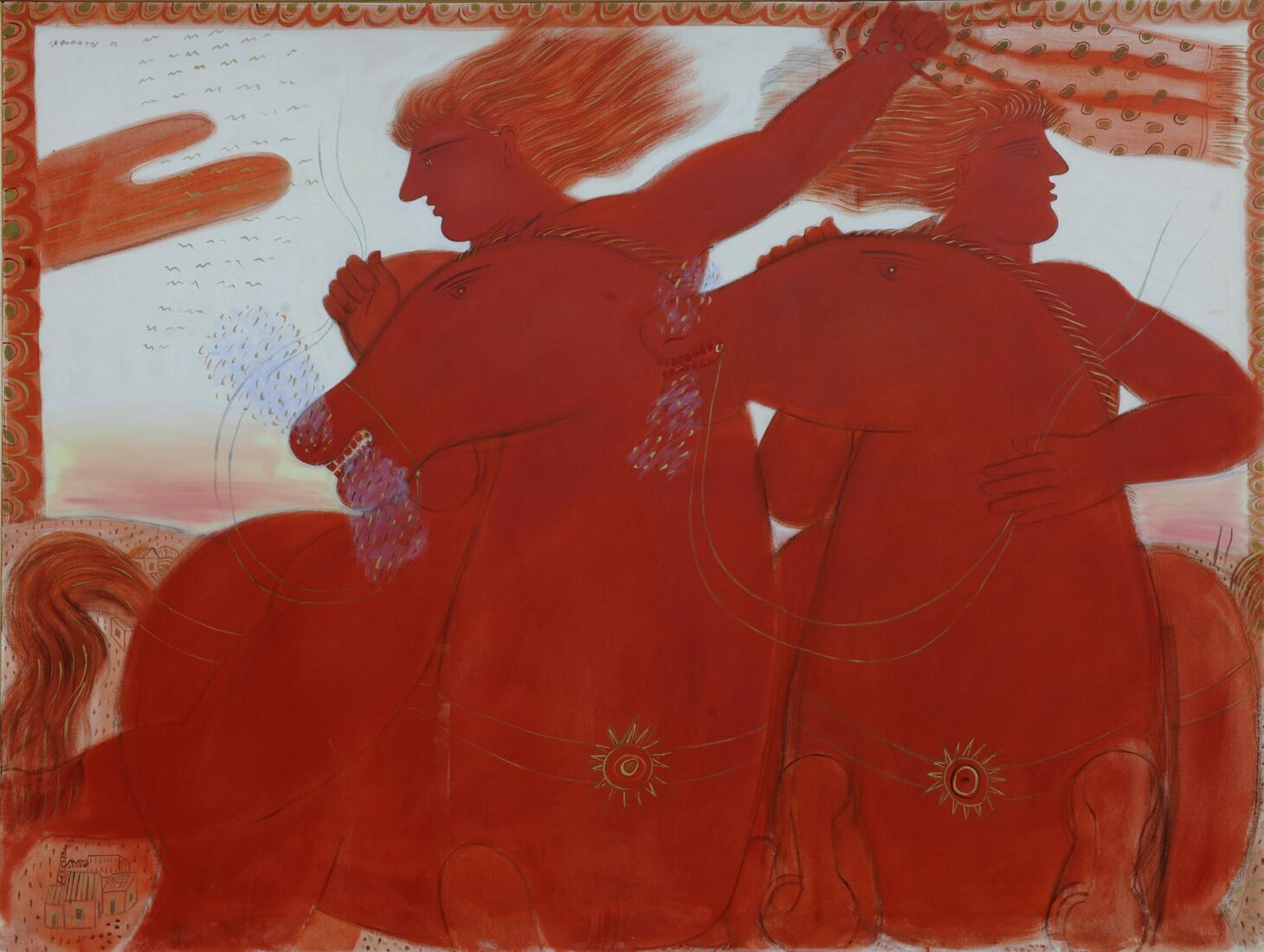
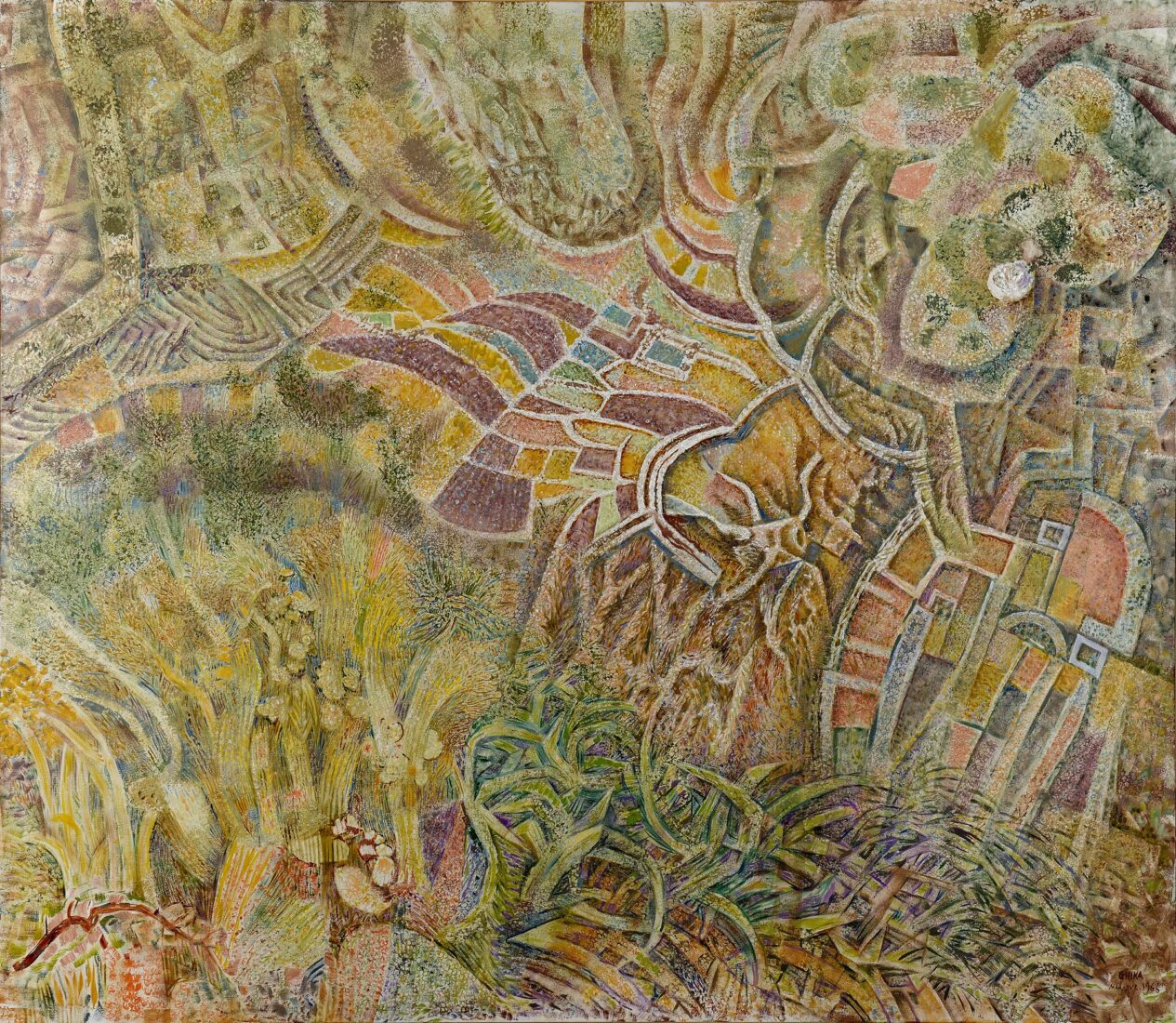
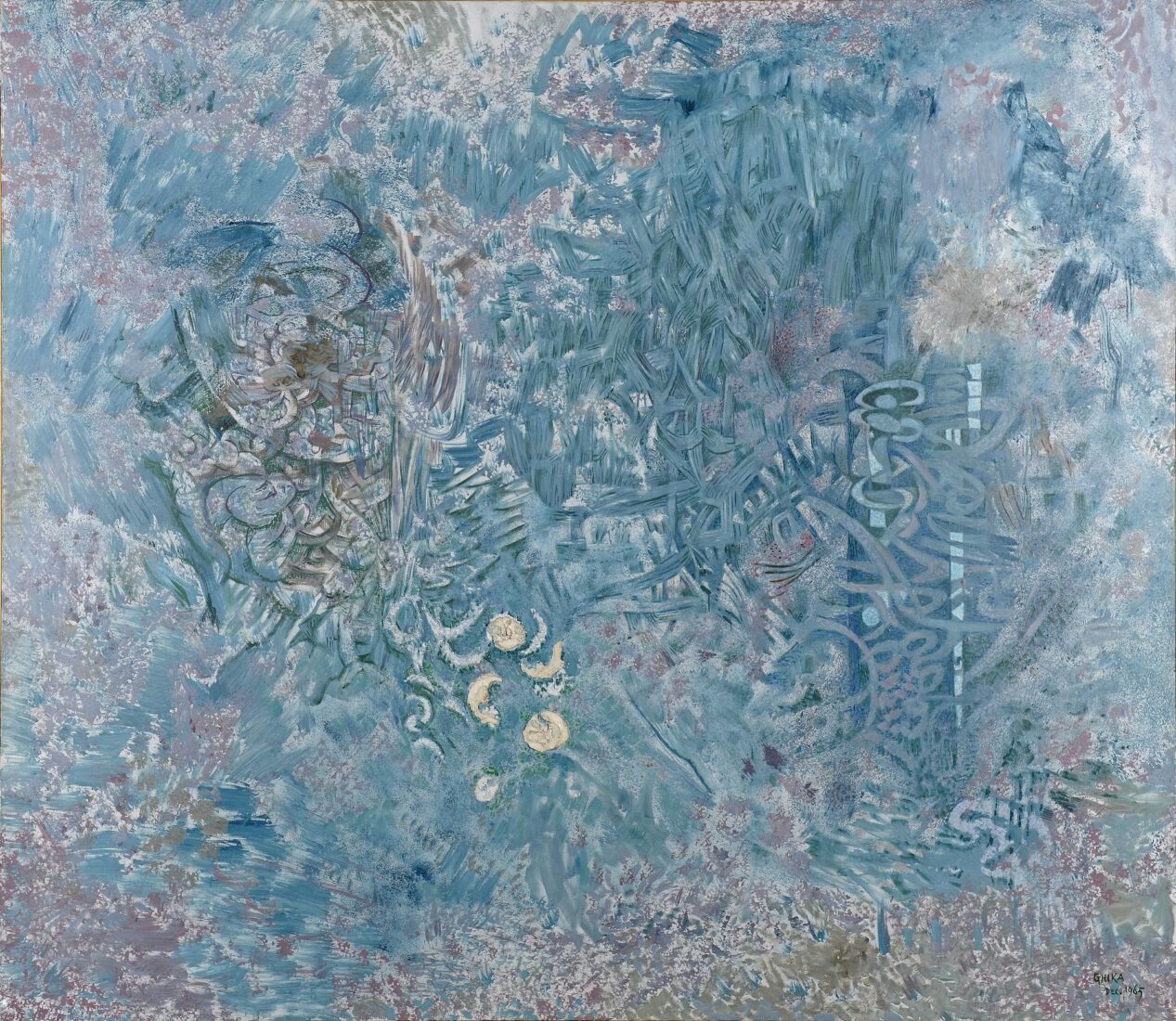
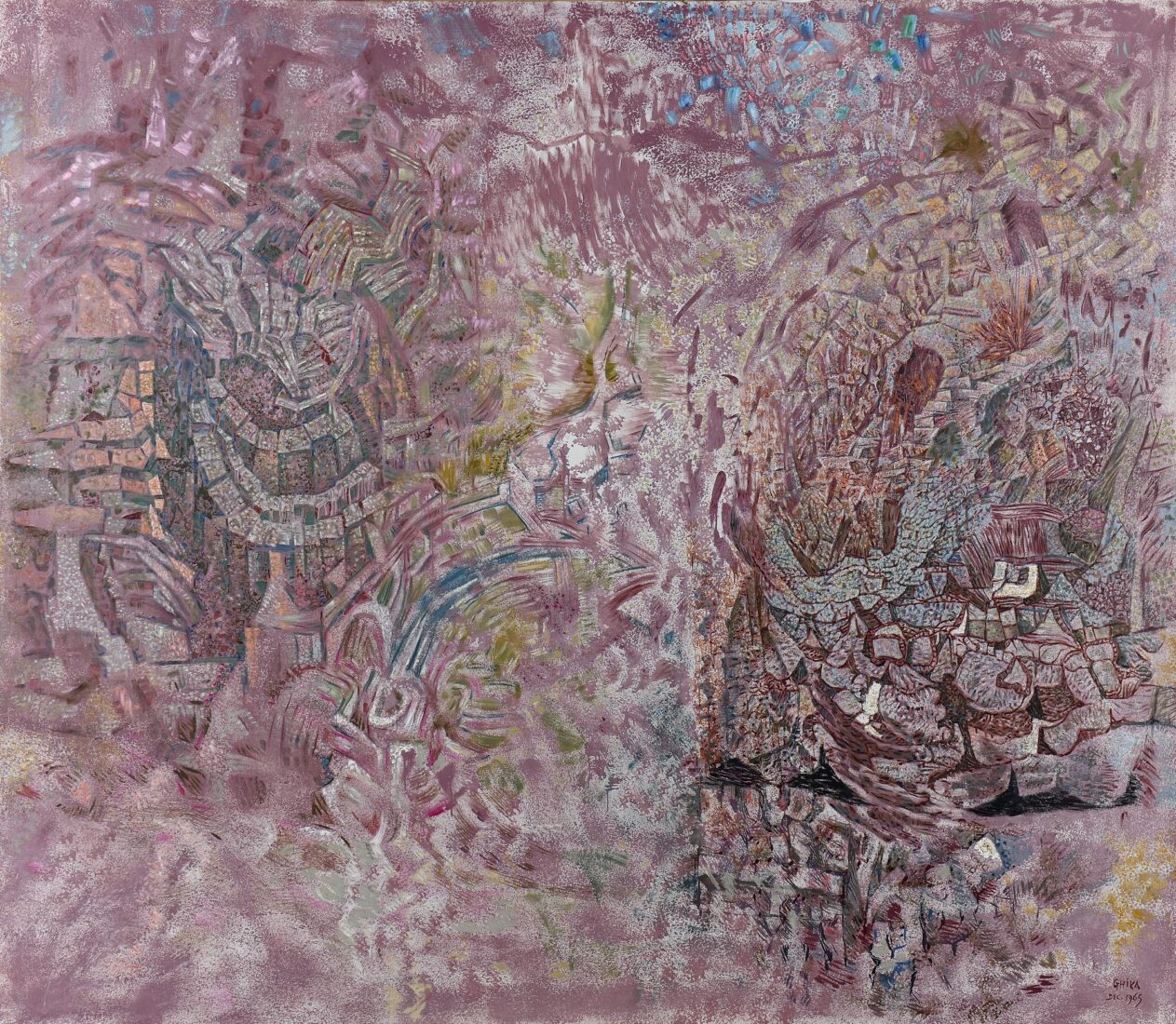
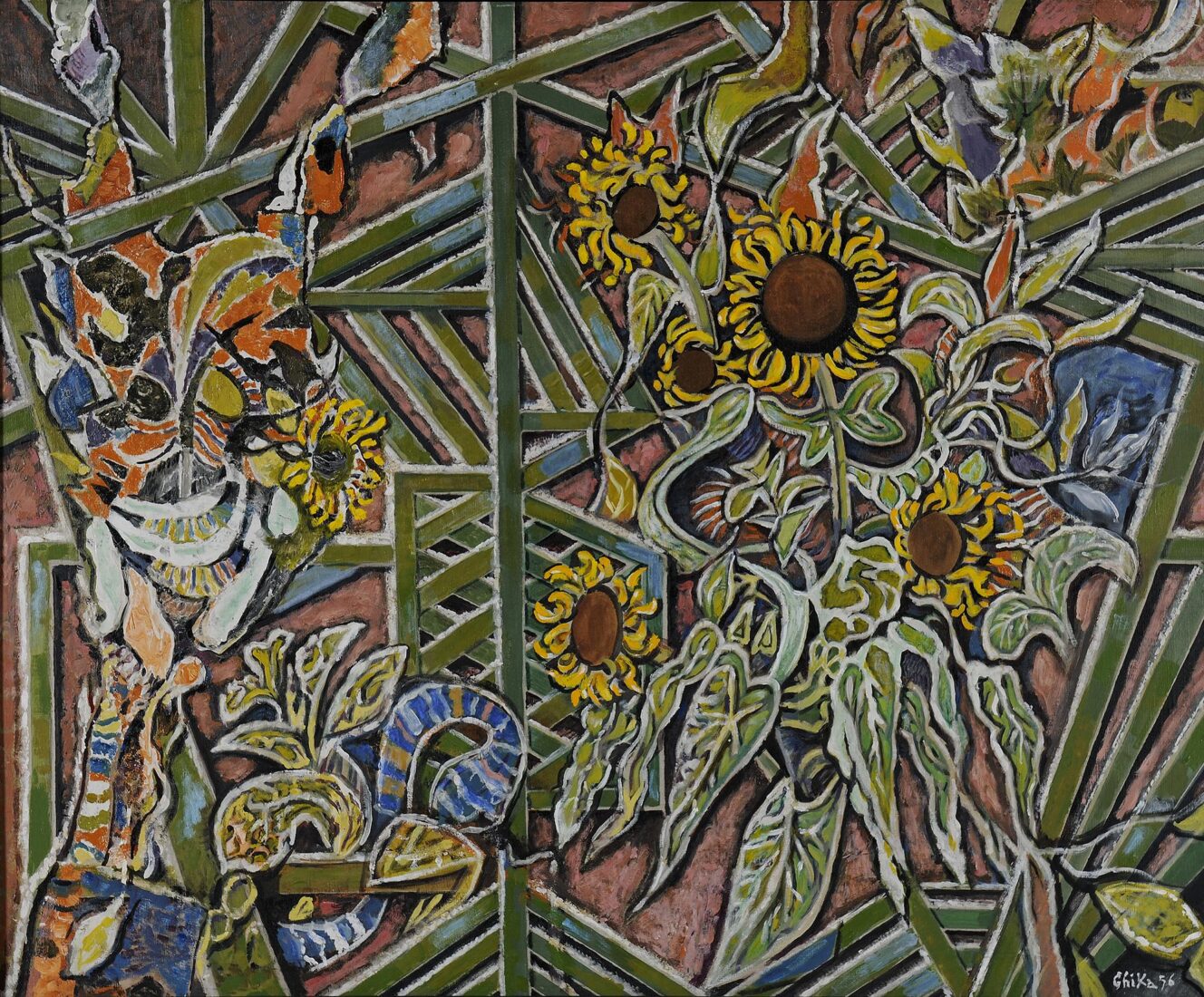
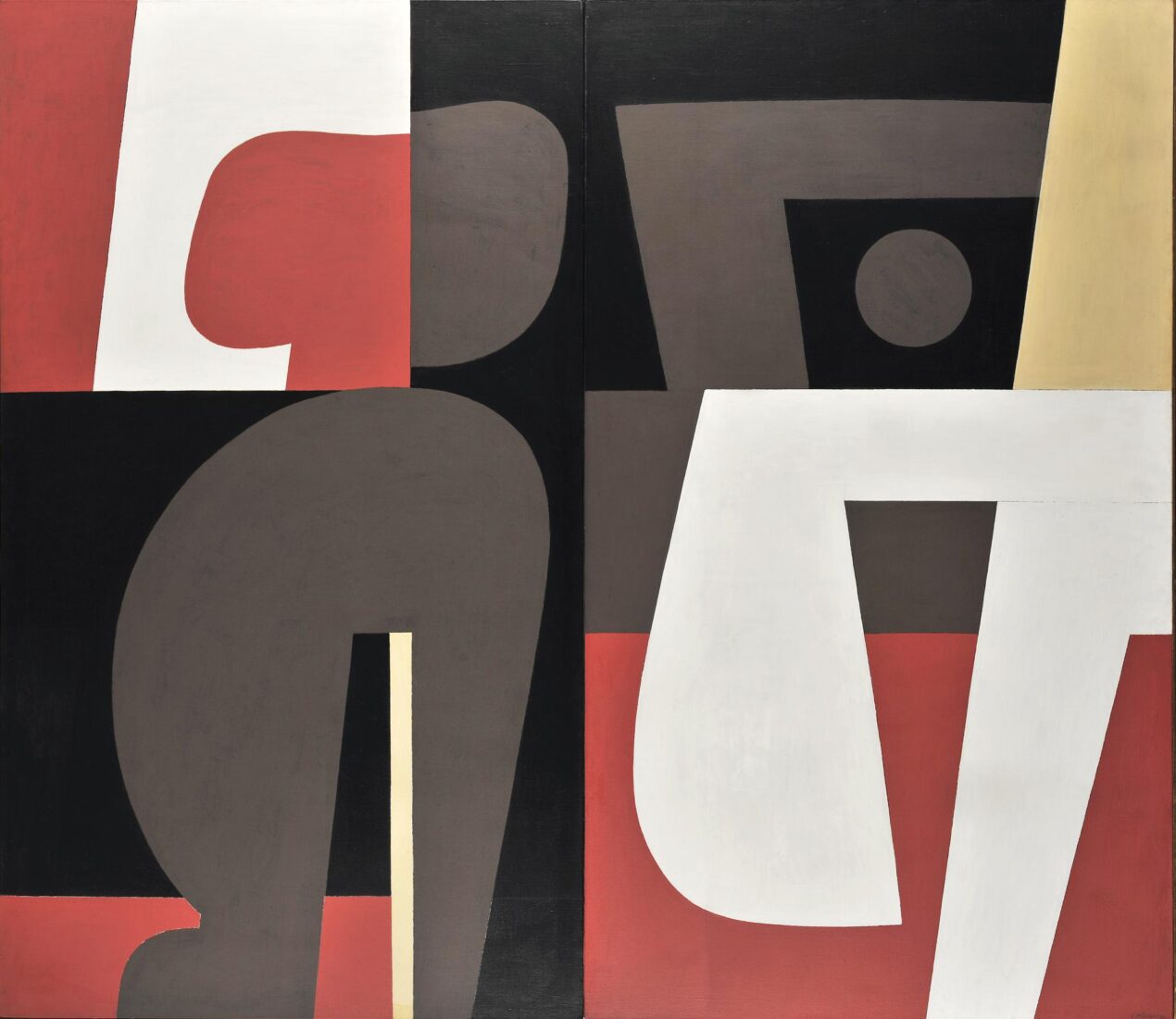
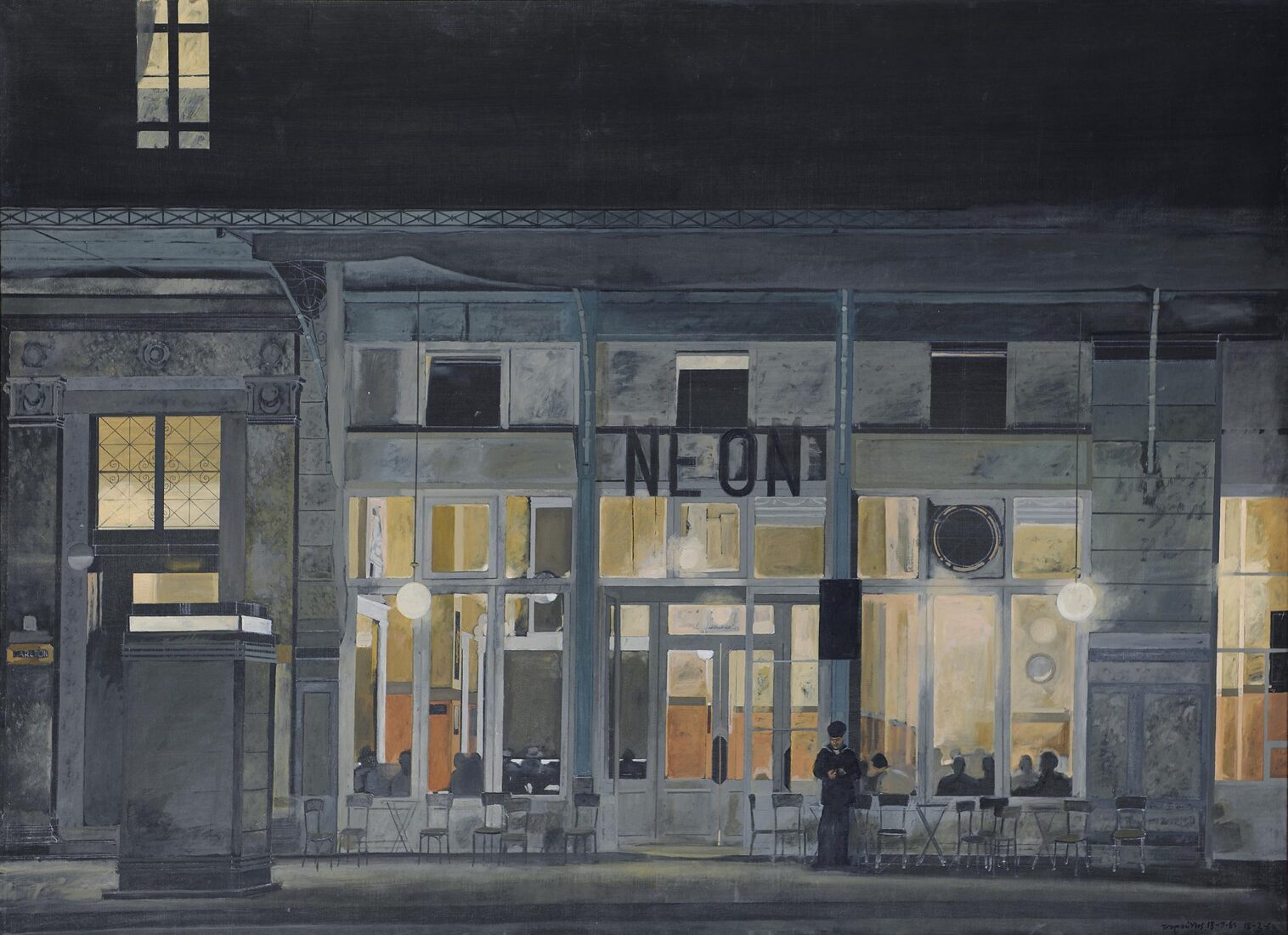
The subject of this diptych by Yannis Tsarouchis is the Neon Cafe as it was in 1956-1966 and still exists in Omonia Square. A daytime version preceded the nighttime view, which is interpreted here. In both compositions Tsarouchis depicts his subject, the facade of the cafe, frontally, eschewing perspectival illusion. The coffeehouse in Omonia Square was an emblematic theme for Tsarouchis, being the place frequented by the painter’s heroes – sailors and working-class youths. The coffeehouse was the stage upon which unfolded the everyday events that charmed this characteristic representative of the Thirties Generation. There are, however, other elements that Tsarouchis wished to call attention to in this theme: the architectural design of the cafe’s facade with its play of rectangular openings, doors and windows creates a grid pattern evocative of Mondrian, the innovator of geometric abstraction. Tsarouchis created an exciting play between abstraction and realism, between modernism and tradition.
The nighttime coffeehouse has the additional factor of artificial lighting, the white, yellow and orange lights that animate the painting’s generally black and grey palette. Here, the cafe’s patrons, a handful of small dark silhouettes, have become a secondary theme. In the daytime version they are absent entirely. Painted with classical austerity, Tsarouchis’ two cafes are his most abstract, modern and suggestive works.
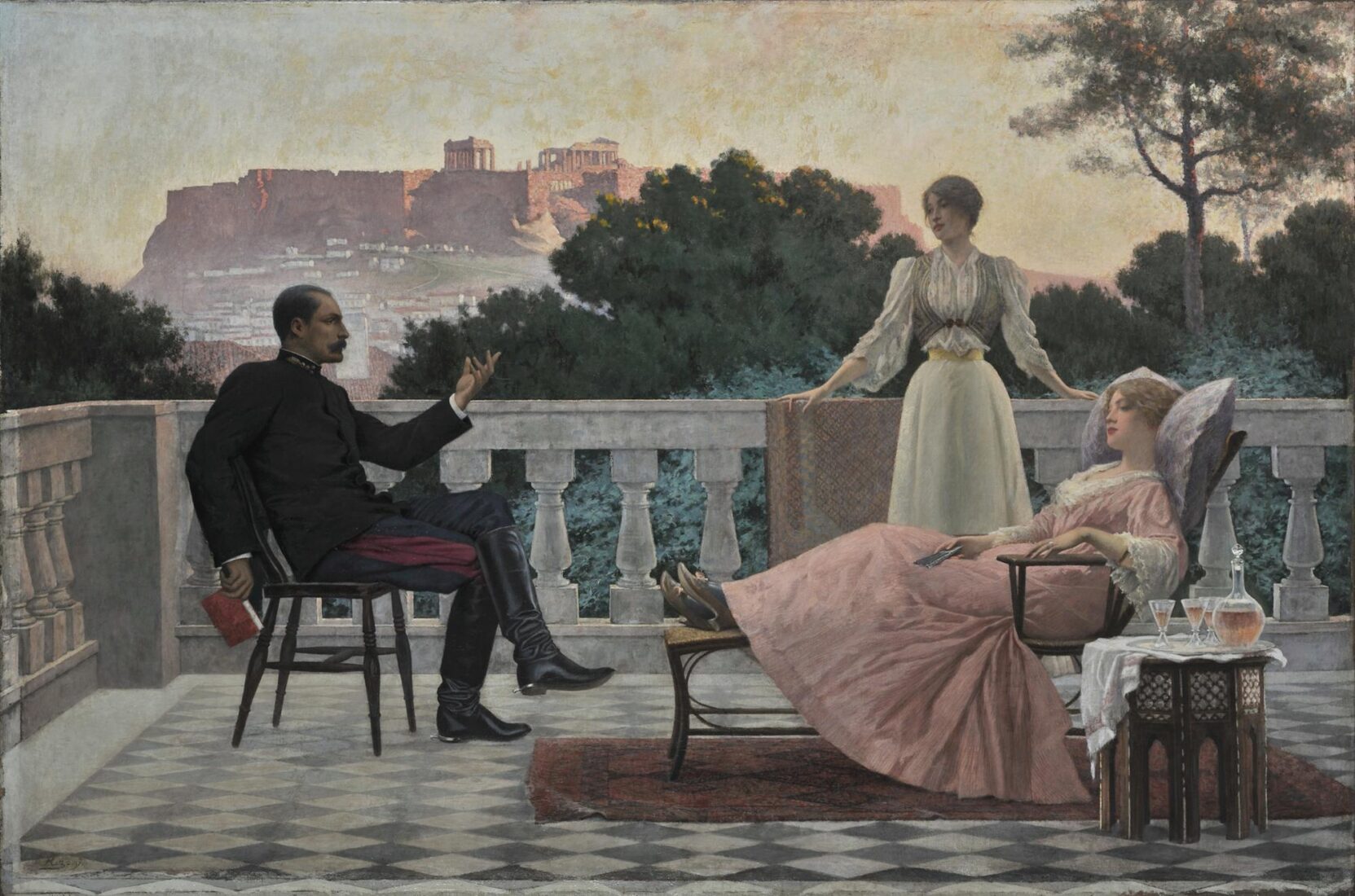
Iakovos Rizos, who studied in Paris, expresses the spirit of the Belle Epoque, that is, of the art developing in Paris around 1900. Beautiful, elegant women portrayed in luxurious palaces or gardens are the main theme of his paintings. This is a pleasant, straightforward painting.
Painted in 1897 and receiving the silver medal in the 1900 Paris World Fair, the “”Athenian Evening”” is one of the most charming works dating from the late 19th century. The work expresses the mood of euphoria and well being characteristic of the wealthy bourgeois life in the late 19th century. On the terrace of a neoclassical house in Plaka, a handsome Cavalry officer is reciting verse to the delight of two beautiful Athenian ladies who are listening to him enchanted. A sweet sunset envelops the Acropolis in its orange veils in the background, infusing the forms and smelting them into the atmosphere. The work may ignore schools and Impressionist doctrines, yet it conveys a contagious poetic effect that speaks to the heart.
